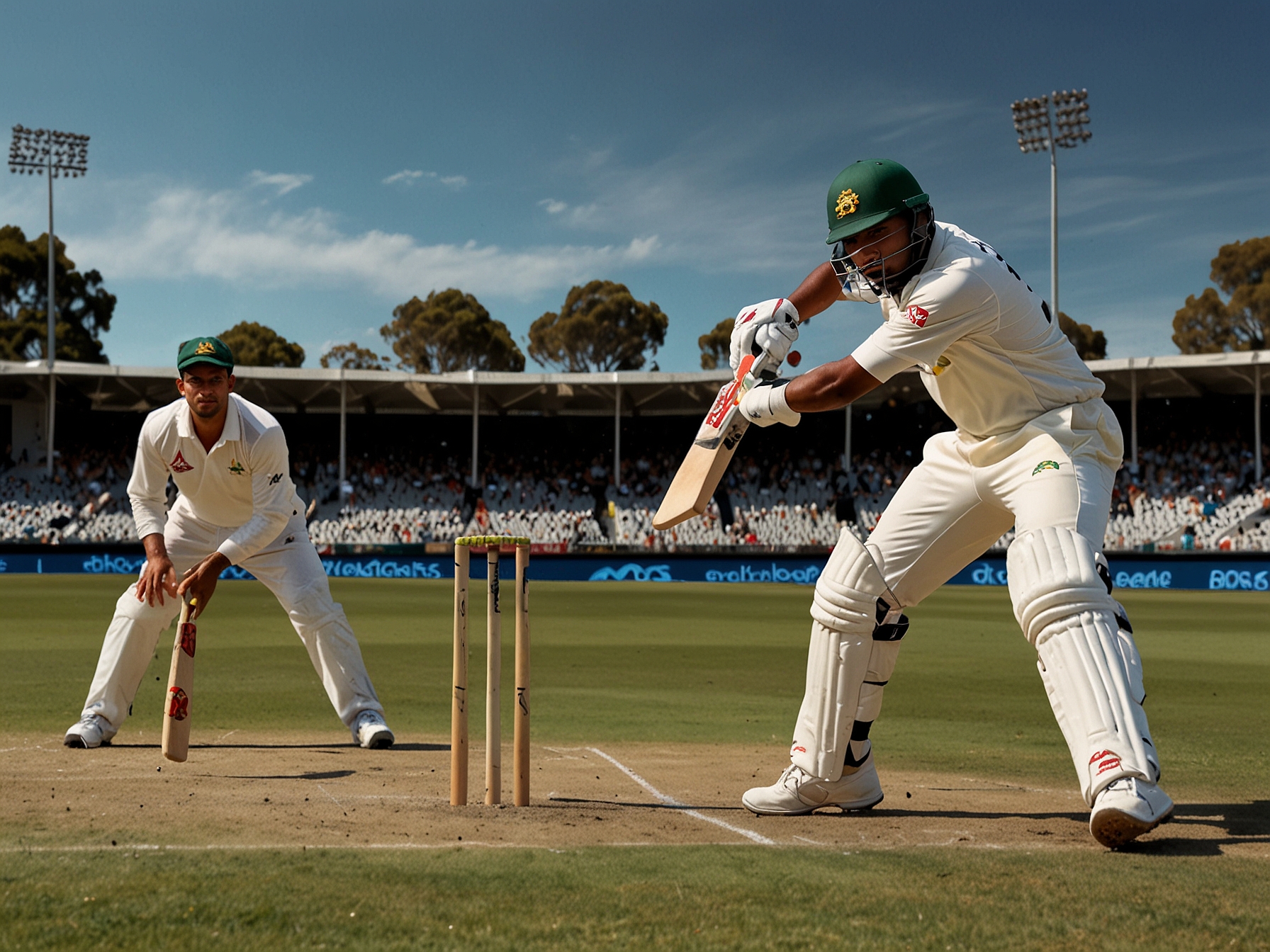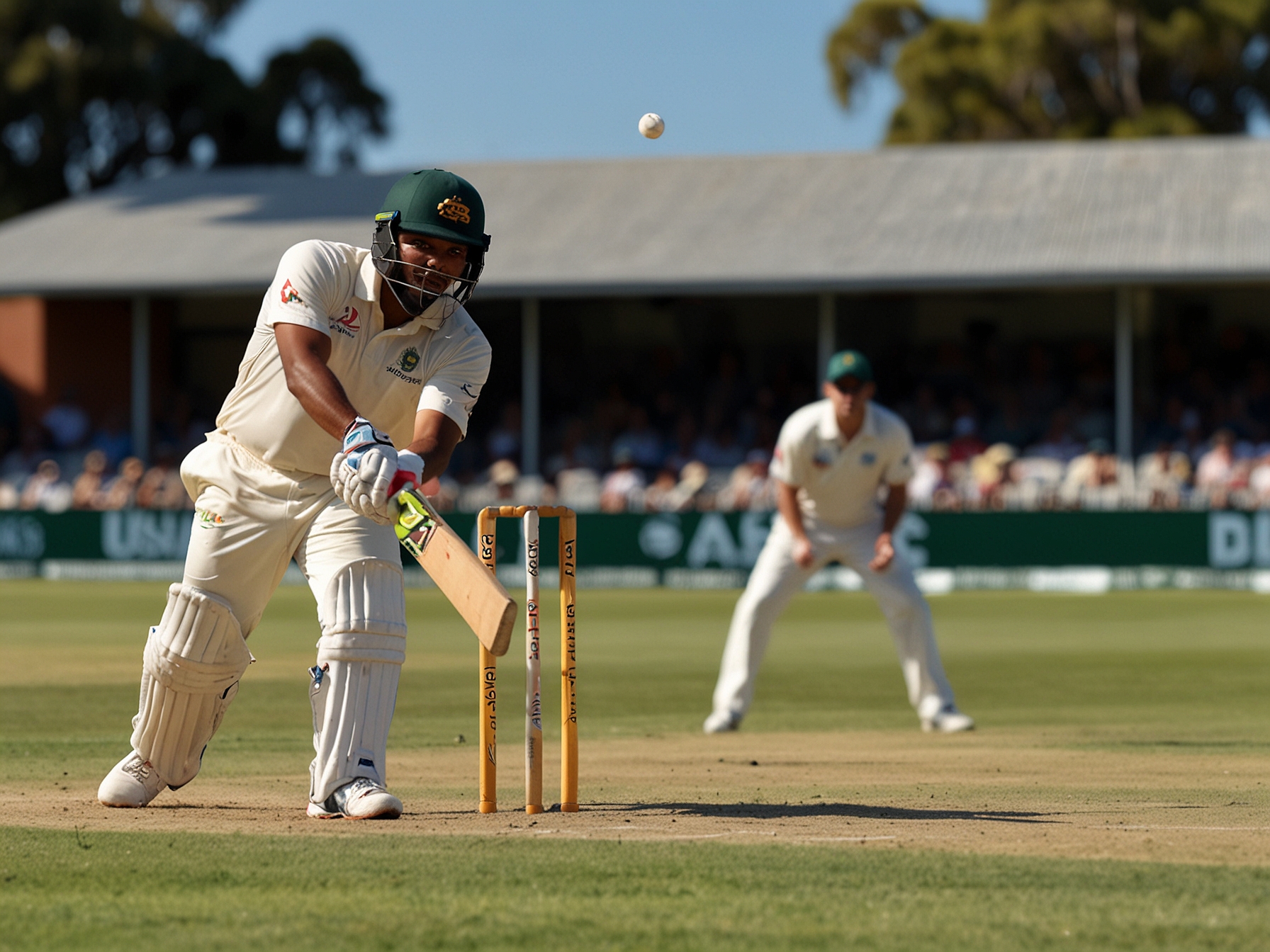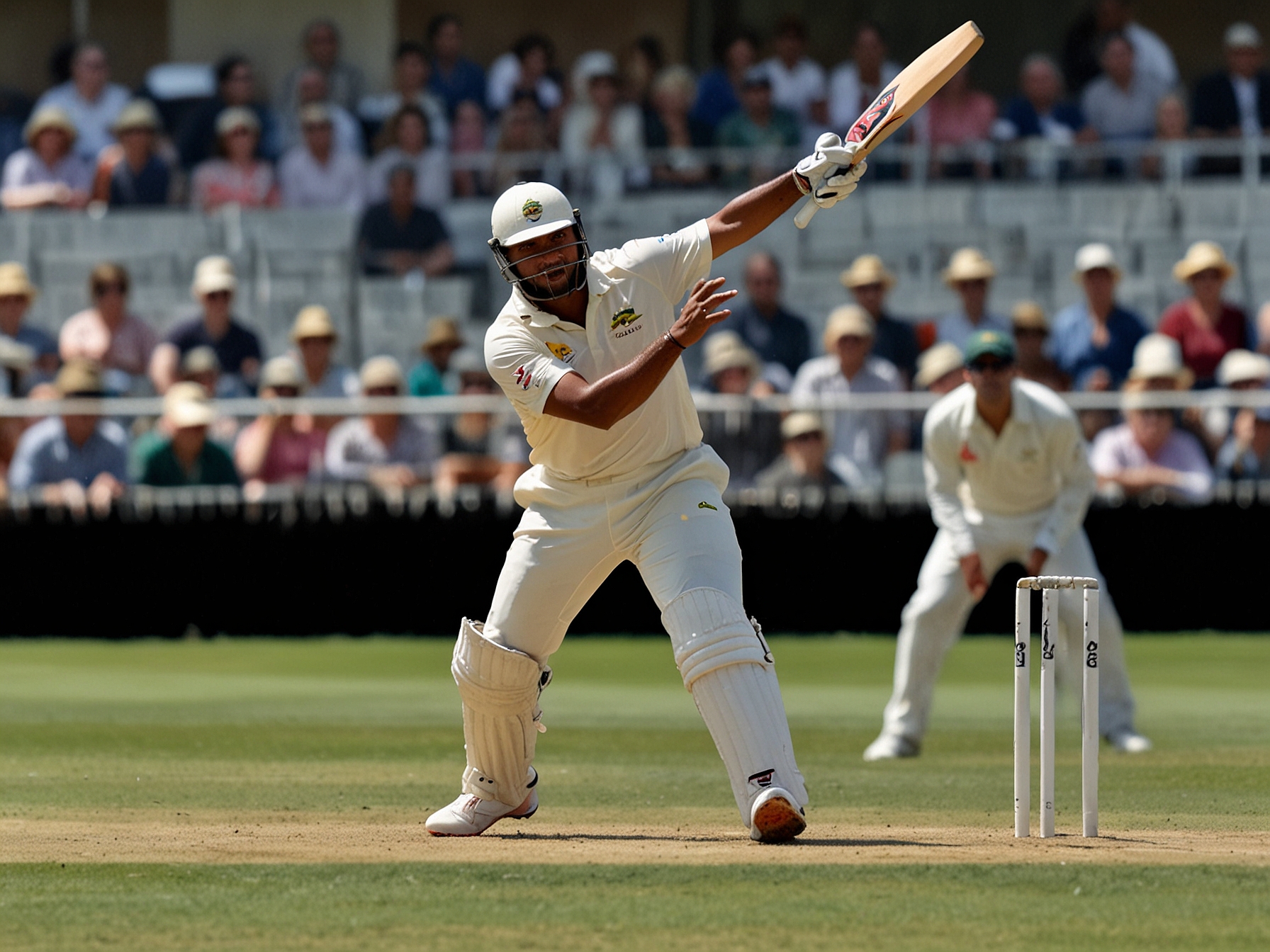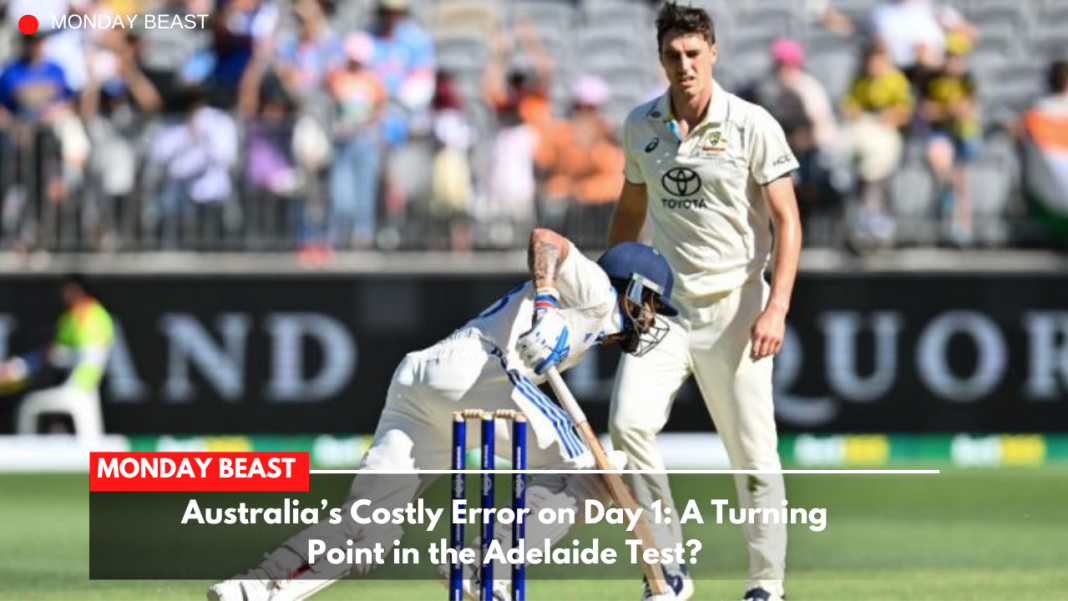Also read
- Daryl Mitchell’s Stunning Catch: A Moment to Remember in Wellington
- What to Expect from Lakers vs Hawks on Dec. 6: Lineups and Insights
Australia’s Missed Opportunity
On Day 1 of the Adelaide Test, Australia faced a pivotal choice. After India opted to bat first, one could argue they made a blunder. The game’s dynamics shifted as India’s batting lineup faltered. They managed a mere 180 runs. Besides a brave counter from all-rounder Nitish Kumar Reddy, the rest of the Indian batting collapsed like a house of cards.

Reddy’s 42 runs stood in contrast to his teammates. KL Rahul and Shubman Gill got starts but failed to convert. Meanwhile, Reddy emerged as a lone bright spot in a gloomy innings. But what if Australia had capitalized on a golden chance?
It was during Reddy’s at-bat that Australia had the chance to snag an early wicket. He faced a delivery from Scott Boland that seemingly hit him on the pads—an apparent lbw shout. The decision not to review it became a point of contention. Was it merely an oversight or a costly gamble?
## Reviewing Decisions: A Game-Changer?

Imagine the atmosphere in the Australian dressing room. Captain Pat Cummins consulted his wicketkeeper, Alex Carey. They concluded the ball likely grazed Reddy’s bat. Yet later, technology—those unfussy cameras—revealed an entirely different story. Did they underestimate Reddy?
The ‘Virtual Eye’ clearly showed two sounds: one from the bat and another from the pads. Would Boland have claimed the critical wicket? Perhaps.
Had Australia chosen to challenge that decision, they might have dismissed Reddy before he even got on the board. A wicket at that juncture could have been crucial. It might have not only rattled Reddy but set a tone for the innings.

## The Ripple Effects
Reddy’s innings proved crucial. After surviving that scare, he not only added essential runs but began to shift momentum. His 42-run knock, featuring three fours and three sixes, injected life into the Indian innings. It wasn’t just the runs; it was the confidence he instilled in a beleaguered batting order.
In cricket, as in life, we often reflect on missed chances. Will Australia rue this one? Only time will tell. But in a tight contest, every run counts, and every decision carries weight.
## Stakes for Day 2
As Australia enters Day 2, they’ve found themselves in a decent position. Despite losing Usman Khawaja early, Nathan McSweeney and Marnus Labuschagne steadied the ship. They ended Day 1 at 86 for 1, but trailing by a significant margin of 94 runs. The question looms: can Australia regain control?
To many, each day of a Test match reveals new layers. Australia might still seize victory, but the main takeaway lies in those small decisions that may turn the tide. Was it just a missed review, or might this Day 1 decision echo throughout the match?
In the end, this isn’t merely about runs on the board. It’s about narratives and pathways that shape a match’s story. Cricket indeed mirrors life in many ways—sometimes it’s the little things that tally big results.




